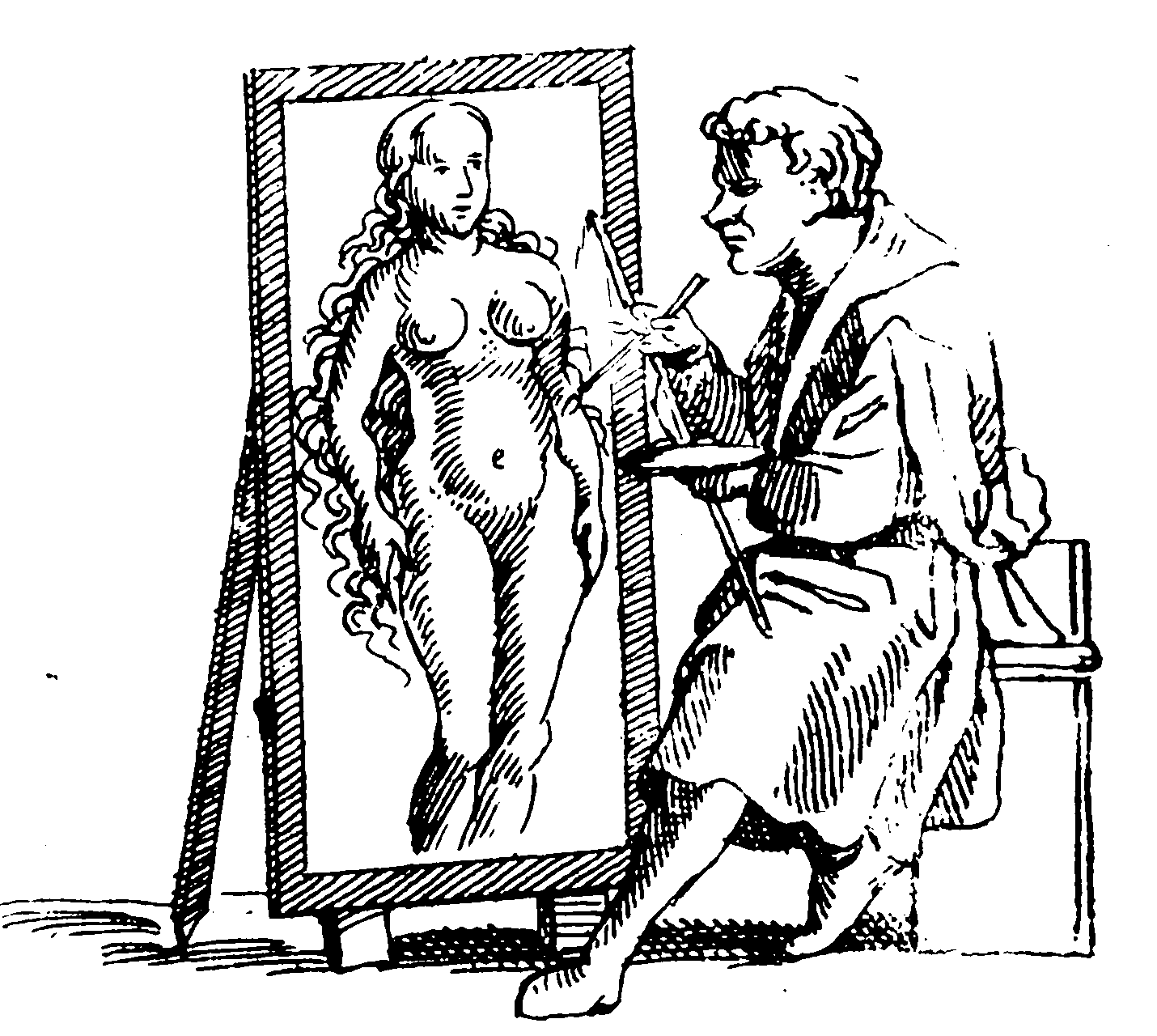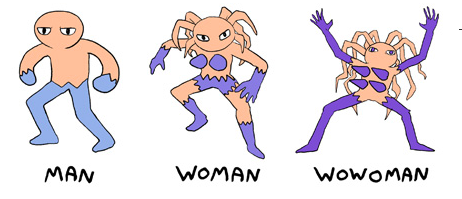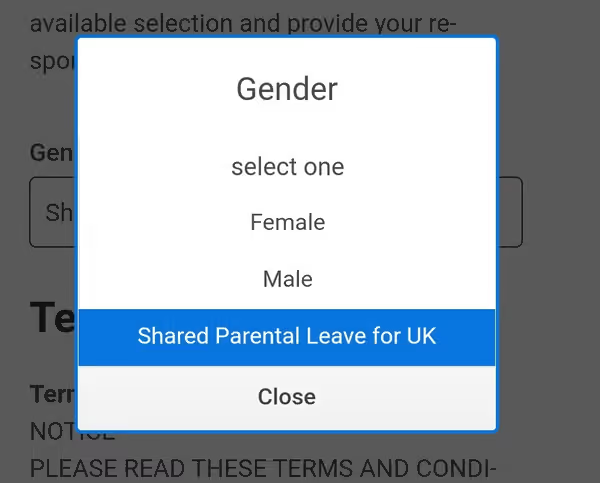Gender identity
Political and/or empirical engagement therewith
August 13, 2017 — November 10, 2024
Suspiciously similar content
Content warning:
Interrogation of gender identities; links to criticisms of various gender norms; woodcut of hermaphroditic cryptid; stuff I would prefer to have no opinion on.
The fraught process of classifying people into lady-people and gentleman-people and sometimes many flavours of other-people is a project of startling interest to many stakeholders.
I’m not pushing a position here and have little skin in this game, but I’m curious about what’s going on. It seems a fascinating fragment of the human experience with a significant impact on the social and political landscape as well as the well-being of those living in it.
And, I don’t have strong intuitions about it. I was assigned male at birth, and I’m OK claiming to be male still. Maleness for me is a comfy suit; I might be happy to wear a different one, but this one’s OK, so why bother? It needs cleaning, mending and alteration sometimes, and it occasionally doesn’t fit perfectly, but if I threw it out, I’d need a new suit, which is effortful.
1 Language about
See gender and language.
2 Accomplishment of gender identities
What is going on with gender identities? Why do some people experience gender dysphoria/incongruence and others not? Why do some people wish to assume one particular mainstream gender identity rather than the one they were given? Why do others wish to assume a new gender not on the traditional menu?
Is part of the profusion of gender identities we now see people switching from voice to exit strategies regarding their genders? If so, why are we, as a society, doing that?
I have little insight except that I did enjoy Ozymandias’ Cis By Default where it’s suggested that maybe my lack of insight is explained by this model: There are two types of people (ish):
- People who have a deeply held attachment to their gender, which had better match up to their physical sex and socially assigned role, or they will be distressed.
- People who don’t mind particularly and will go with the flow.
I can’t easily verify that I’m in category 2, but I suspect that if I had sudden [surgery formerly known as gender reassignment whose new name I forget], I’d be distressed by the medical inconvenience and social explanations, but otherwise mostly indifferent. For practical, public, rhetorical purposes I’m in group 2.1
If Ozy’s model holds, it would explain some confusion in public discourse; an unarticulated divide between the actively-invested and inertia-based gender identities.
A resonant model for the accomplishment of gender categories is David R. MacIver’s Gendering. Possibly related, Cailin O’Connor’s The Origins of Unfairness: Social Categories and Cultural Evolution; connection to feminism.
3 Hormones and other chemical pollution
I see this mentioned on Twitter. Seems somewhat interesting but also crowded with conspiracist talking points; possibly too exhausting to engage with that.
4 Trans-inclusion/exclusionism in sports and Goodhart’s Law
TBD. A fascinating invasive argument. In many areas of transgender rights or representation, a détente has been reached that includes different ad hoc gender roles (“this is my pronoun”, I can assert in the workplace). People on dating sites often mention their gender presentation and current genital configuration separately to avoid confusion or recruit only from potential partners who don’t care, etc.
But in sports! A chance to spark acrimony. For sport can have only two categories, and physical sex and its variation has a long history of weaponisation. It is highly competitive with high stakes. High-performance athletes and transgender people are prominent in public discourse.
Annabelle Quince’s fascinating history of sex testing in sport in the context of the Cold War is highly recommended.
A cursory glance at the literature (only Jones et al. (2017) TBH) reports that empirical data on the effect of transgender status on sports performance is not clearly significant, but that needs further investigation. Without reading more, I guess the evidence is ambivalent and people will adopt polarised positions about it.
5 Gender diversity in autism spectrum identities
Correlations exist! Fascinating. Dattaro (2020); Strang et al. (2018); Walsh et al. (2018); Warrier et al. (2020)
See autism.
6 Cross-culturally
I am especially curious about gender perception, misassignment and other phenomena in a cross-cultural context, especially contemporary. How are gender categories being negotiated in modern Vietnam, modern Nepal, modern Thailand, etc.? Need links on those themes.
7 That giant autogynephilia argument
There’s a landmine in online discourse about transgender identities called autogynephilia. It has a technical definition, but AFAICT that’s nearly irrelevant. Its main function on the internet is as a trigger-word meaning Start Fighting Now. I don’t know enough to have an opinion on it, but it sounds fascinating.
- Causality is essential: Reply to MTSW on Autogynephilia
- Why can’t we talk about autogynephilia? : r/ExplainBothSides
- My autogynephilia story - UnHerd
- Thing of Things, On Autogynephilia
- Aella, Everyone Has Autogynephilia.
- The Social Construction of Reality and the Sheer Goddamned Pointlessness of Reason
8 Incoming
Agenty Duck: One Month On T is the most fascinating and nuanced description of the experience of starting testosterone I’ve read, shortly after pregnancy too!
Miquel Missé contra medicalisation of transgenderism
Lionel Shriver compares transgendered states to anorexia
Although tales of people who starved themselves or passed for the opposite sex exist in the historical record, eating disorders and transgenderism on a mass scale are recent inventions. Collectively, we made these dire maladies up.
Interesting for weighing in on medicalisation, e.g. asking Is “gender dysphoria” a disease? Or is a gender identity unaligned with one’s birth appearance a preference? Or thing of a new kind? Under which category should this state of being be permitted subsidised health care?
Not greatly convinced by this author’s pessimism about transition therapies; the success rates seem pretty good, empirically, (at least, in adults), whatever the underlying cause of the need for them. I’m not so invested in origin stories as a source of policy, personally.
9 References
Footnotes
Perhaps that simply implies I’m not very introspective? I’ve thought about this at length, honest.↩︎



